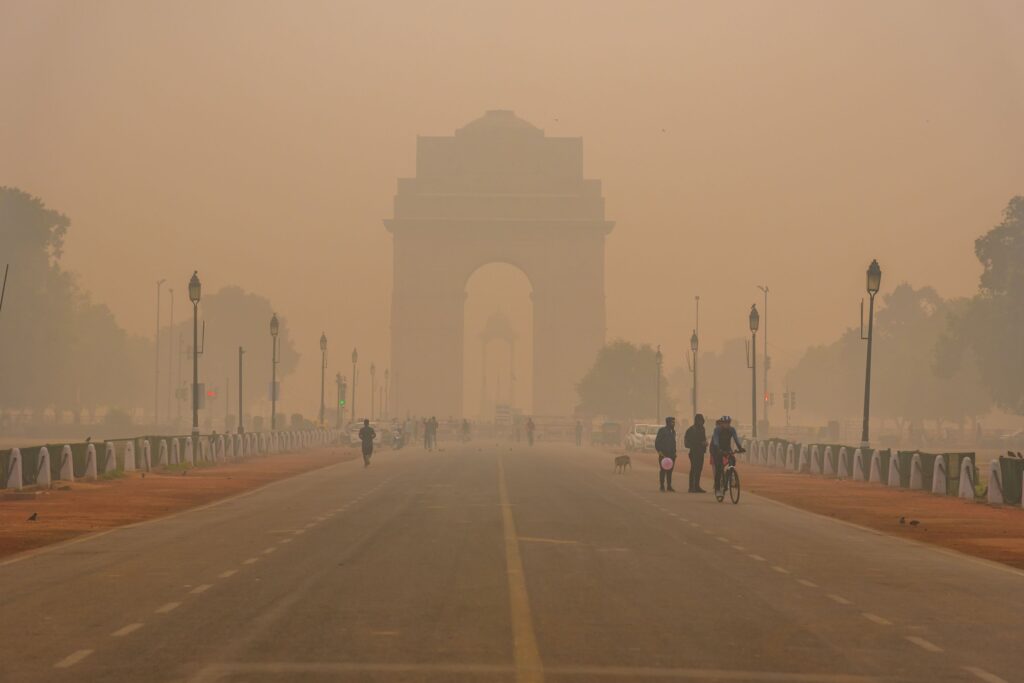India’s Rich Pollute the Planet Eight Times More Than the Poorest: Study
5 Mins Read
The discrepancy between spending on food and luxury products by the rich and the less affluent in India is correlated to the climate impact too, with wealthier citizens accounting for a much larger environmental footprint.
There’s a huge gap between the climate footprint of India’s wealthiest and least affluent, primarily due to food consumption and luxury purchases, according to a new study published in the Ecological Economics journal.
The research explores the impact of consumption patterns and expenditure on climate change, with basic food spending increasing modestly from low- to high-income individuals, and non-food and luxury expenditure representing a significant rise for the latter.
The study deliberately looked at spending instead of incomes, analysing annual expenditure in deciles starting from ₹10,000-173,000 ($120-2,040). The wealth concentration in India has become much more lopsided in recent years, with the richest 1% accounting for the highest share in over 60 years, and wealth inequality reaching its highest in history.
“While there is deep inequality between the developed and developing world, there is also deep inequality within each country. Just like how we hold rich countries to account for their emissions, we also need to put some responsibility on rich Indians,” Nagraj Adve, member of Teachers Against the Climate Crisis, told environmental publication Mongabay-India.
Luxury spending needs to be curtailed

In India, the third-most polluting country in the world, the annual expenditure per person rises by 17 times between the least wealthy and richest families in India, which is linked to an eightfold hike in carbon emissions, a sixfold increase in water footprint, and the doubling of air pollution.
The relatively lower change in the latter is due to the use of fuelwood and other polluting biomass for cooking in low-income households. When it comes to the rich, the growth in particulate matter footprint is ascribed to expenditure on personal goods like high-end phones and watches, followed by social functions and private transport.
Social functions topped the list of activities contributing to the carbon footprint of the rich, followed by spending on jewellery and ornaments, furniture and fixtures, and private transport. Meanwhile, the gap between the richest 10% and the next 10% was the widest among categories, punctuating the need for policies directed towards lowering demand for luxury goods.
The study found that the richest families spend six times as much as the least wealthy families do on basic food, but this rises to 26 times for non-food purchases, and 47 times for luxury conspicuous expenditure (which involves spending for pleasure-seeking or to display one’s social status). “Even these figures would be at best an underestimate of the actual, because rich families are usually under-represented in the developmental surveys,” said lead author Soumyajit Bhar.
The researchers also looked at carbon intensity, which was higher for low-income households in the non-food category due to the use of kerosene as fuel. But the intensity grows for richer families in the luxury spending category, exhibiting how the products they buy or consume are more harmful to the planet. The wealthiest 30% have the same carbon intensities in the luxury category, but the top 10% have a disproportionately larger footprint. The richest 10% also have a 40% higher water footprint, 59% particulate matter impact, and 50% more carbon emissions than the next 10%.
“Carbon is an important global indicator but not the most significant issue in India considering our per capita carbon footprint is small [1.9 tonnes vs the global average of 4.7 tonnes annually],” said Bhar. “On the other hand, local and regional issues like water scarcity and air pollution have been a matter of great concern, especially for the poor. So, it was important to include these footprints along with carbon.”
Food the major source of climate footprint

“This paper is in line with many other studies in that the most affluent brackets bear the most significant responsibilities,” said Jemyung Lee, a researcher who led a 2021 study revealing that rich Indians emit seven times more carbon dioxide than the poor. “It indicates that policies should focus on reducing demand of conspicuous/luxury consumption rather than relying solely on reducing pollution intensity through renewable grids and other technologies.”
Among all households, food represents the biggest source of environmental footprints. Direct water usage, for example, makes up only 5-7% of the total water footprint – most of this comes from the food Indians eat. Rice and wheat require heavy irrigation, and are responsible for the bulk of the water footprints of lower- and middle-income families. For the rich, this is attributed to higher consumption of fruits and nuts.
“Fruits and nuts, cereal products, and pulses make the water footprint from the food basket of the richest 10% households, 30% higher than that of the second 10% households,” said Bhar. “Though fruits and nuts are counted in luxury consumption, they are essential for a healthy diet, thus revealing the trade-offs between health and environmental benefits.”
However, rich Indians consume more calories than recommended by dietary guidelines, and an even greater amount when compared to the national average, according to a 2019 study. If all citizens took up these eating patterns, greenhouse gas emissions, water footprint and land use would rise by 19-36%. If everyone shifts to a healthy dietary intake, this increase will be limited to 3-5%. But it’s still an increase, which suggests that eating habits need to change drastically across India.
Some have suggested the implementation of a carbon tax, but this comes with its caveats. “There is a lot of debate going on regarding carbon tax which can be levied on services and products which score high on carbon emission. For that to work properly, however, the poor have to be provided a cushion through subsidies like free electricity,” explained Adve.
“Setting an absolute cap on emissions of the rich and wealth tax can also go a long way in addressing wealth inequality and needless consumption. On the other hand, offering free LPG to poorer households can help curb their biomass use which will have far-reaching benefits.”
The study’s findings follow global trends. Research has found that the richest 10% contribute to half of all emissions, which is 40 times higher than the poorest 10%.



